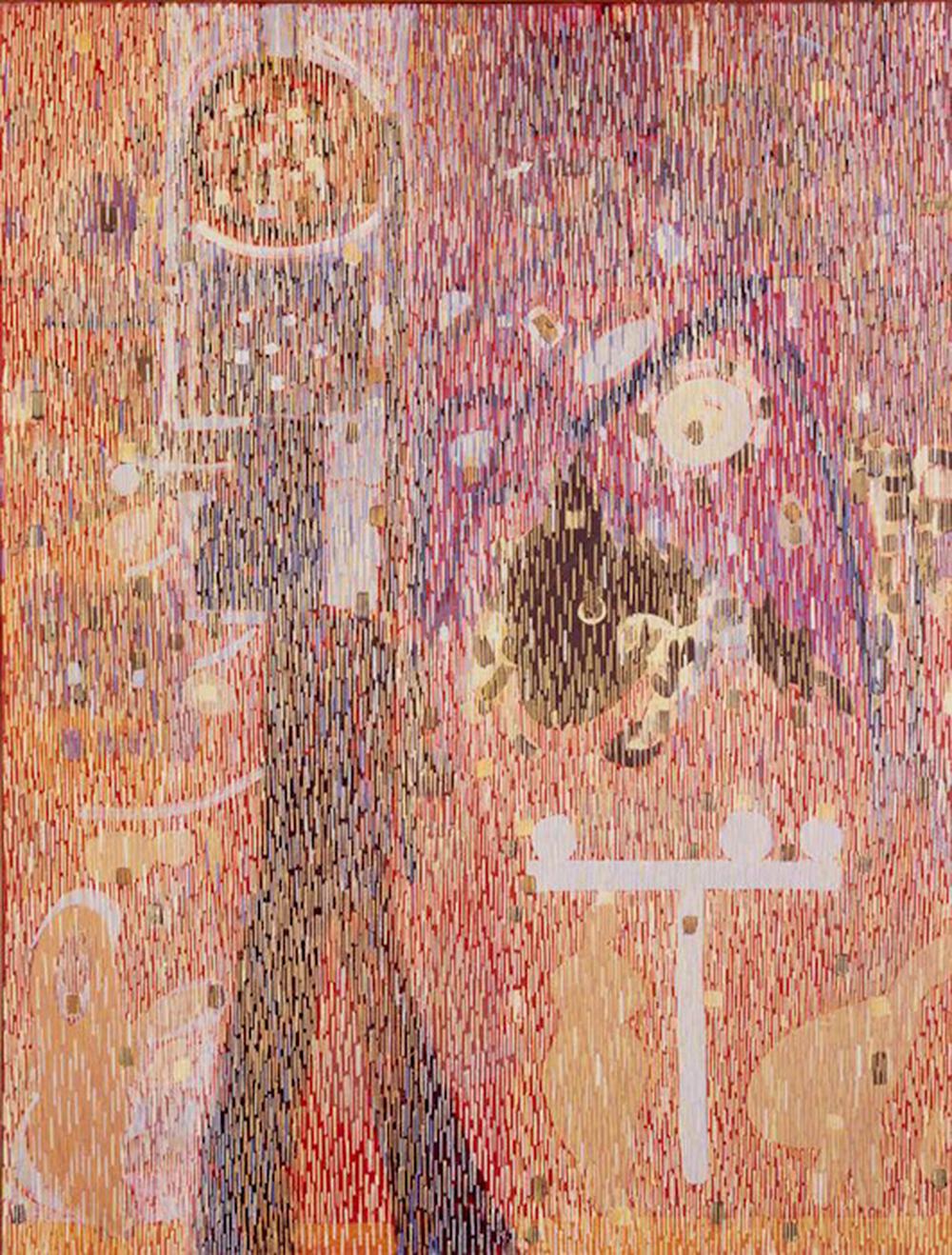Lee Mullican. Woven Surfaces
Lee Mullican realized early in his career that his signature painting style created surfaces that resemble woven objects. When he came across a Pomo Native American basket at a San Francisco antique shop, the artist recognized the slightly three-dimensional, parallel marks: “The kind of feathered surface of the basket was a little bit like what I was doing in painting.”1 Though his technique remained the same, the conflict he felt between abstraction and image was a constant challenge. In Nightshade (1958), a work made after the artist moved from San Francisco to Los Angeles, images seem to emerge from a palette quieter than in most of the artist’s other works. “It was at this time that I began to realize that I didn’t need to be quite such a purist—or quite that abstract. . . . I began to employ certain aspects of heads and bodies and invented animal forms.”2
Lee Mullican, oral history interview with Paul Karlstrom for the Archives of American Art, Smithsonian Institution, May 22, 1992–March 4, 1993, transcript available at aaa.si.edu/collections/interviews/oral-history-interview-lee-mullican-12846. ↩︎
Lee Mullican, oral history interview with Joann Phillips for the Oral History Program, University of California, Los Angeles, as part of “Los Angeles Art Community: Group Portrait,” January 8, 16, and 23 and February 20, 1976. Transcript available at archive.org/details/leemullicanoralh00mull/page/n349/mode/2up. ↩︎
